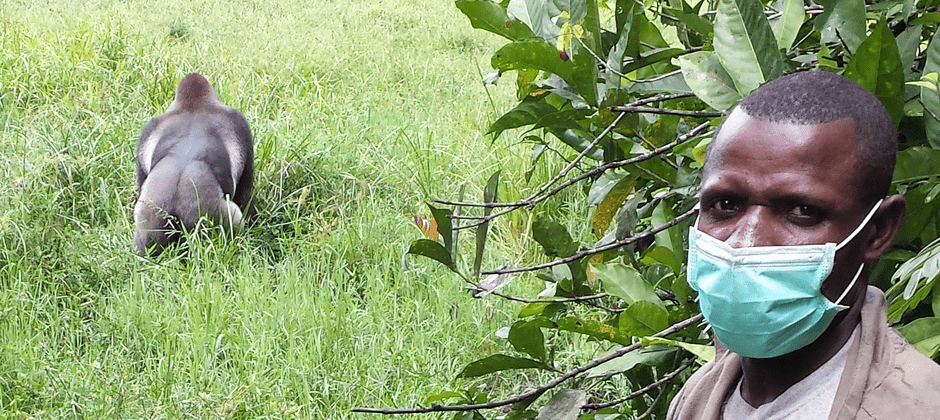Share this article
Should we worry about spreading coronavirus to wildlife?
Researchers warn that biologists and others in close proximity to wild mammals should take steps to avoid spreading SARS-CoV-2, the virus that causes COVID-19, to them.
In a perspective published in Mammal Review, a group of scientists from Belgium and Germany are calling for people to take the same measures they would take to prevent the disease from spreading to humans.
“Everybody is thinking about coronavirus and its evolutionary origin associated with bats, but actually the risks of this coronavirus pandemic right now isn’t limited to humans and bats,” said Sophie Gryseels, a professor of evolutionary ecology at the University of Antwerpen and the lead author of the perspective piece.
An unrelated study published in Scientific Reports used modeling to look at how the virus might infect different animals’ cells. The researchers found 26 animals regularly in contact with people, including dogs, cats and sheep, that may be susceptible to infection and could re-infect humans later on.
Since similar viruses have been detected in diverse species, “it is therefore probable that SARS-CoV-2 can also infect a wide range of species,” they concluded.
“Science is not standing still,” Gryseels said, “but it’s hard to keep track of what is known and not known.”
Working from home during lockdown, Gryseels was keeping an eye on the coronavirus research as it relates to wildlife. When a colleague questioned if he should be handling bats anymore, Gryseels took it a step further. She wondered what other mammals might be in danger.
They knew it wasn’t just primates that could contract SARS-CoV-2. There had been reports of tigers at the Bronx Zoo becoming infected as well as other mammal species. “When that happens, we can’t really predict which species are susceptible based on their relatedness with a known susceptible host,” she said. “The ones that are susceptible are scattered across the tree of life of mammals.”
To help people understand the risk of transmission to different mammals, Gryseels and her colleagues assembled published instances of mammals being infected.
Among the animals that have contracted the virus are minks at farms where they’re bred for fur. While humans are believed to have introduced the virus in several farms, like the one where the disease was first reported in the Netherlands, Gryseels worries that another species may have spread the disease in others because there was no clear link to human infections. “I’m a little worried we already have a wildlife host of this coronavirus in the Netherlands,” she said.
Gryseels suspects animals that spend time in groups, like rodents, small terrestrial mammals and bats that roost in tight quarters, may be more susceptible. “We’re not super worried about wildlife that have solitary lifestyles,” she said.
But she is worried that a carrier could spread the disease to an endangered or threatened species. In Belgium, where Gryseels lives, she worries a rodent like a vole might interact with foxes, deer or wild cats and spread the virus into their populations.
“Transmission might not survive among bobcats or pumas or wild cats,” she said. “But if the virus is present in other animals in the same community, there’s a continuous risk of getting it, just not from their specific species.”
She believes researchers and others who spend time with wild mammals should take precautions.
“I think it’s very important to realize we have to behave among wild mammals the same way we behave toward other people during this pandemic,” she said.
Because people may be infected without knowing it, she suggests they maintain physical distance, wear a mask, and decontaminate any material they use. In some extreme cases, it may mean suspending fieldwork, she said, and anyone who suspects they’re infected or have had a positive test should stay away from wildlife.
Researchers are unsure how deadly the virus is for mammals, Gryseels said. So far, animals infected in labs or otherwise have mild or no symptoms, she said, but there could be variation among individuals. And they can spread the virus back to humans.
The study published in Scientific Reports found that for some animals, such as sheep and great apes, the virus’s proteins could bind as strongly as they do in people, although some of those animals, including sheep, have not been studied with infection tests.
Header Image:
Researchers recommend wearing a mask when coming close to mammals like gorillas that are susceptible to contracting the virus that causes COVID-19.
Credit: Tobias Gräßle from the Leendertz-lab/RKI and the WWF Gorilla habituation program Sangha Dzanga, Central African Republic








